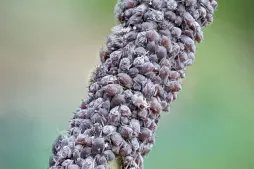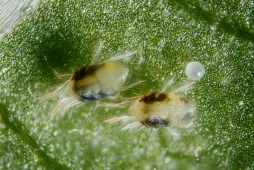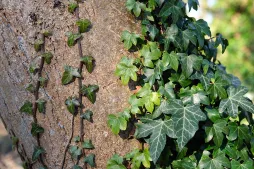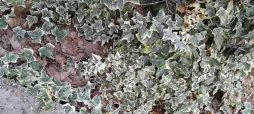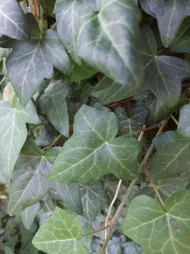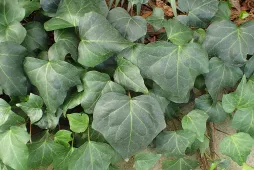Hedera helix 'Arborescens', the ivy tree
Hedera helix 'Arborescens' is an ivy unlike any other. This member of the Araliaceae family is distinguished from other varieties by its habit and the shape of its leaves.
How to recognize Hedera helix 'Arborescens'?
Unlike other ivy varieties such as hedera 'Eva or hedera 'Wonder, Hedera helix 'Arborescens' does not climb. It forms a bushy shrub two meters high with the same spread.
The leathery leaves are whole. Oval, sometimes cordate, they are bright green with lighter veins. This evergreen foliage covers the plant all year round.
Flowers appear in late summer. From August to October, Hedera helix 'Arborescens' is adorned with corymbs of yellow or cream flowers.
In winter, they give way to clusters of fruit. These black berries contain the seeds.
Although ivy is a favorite with birds and insects, it is toxic to humans and mammals. If you plant a hedge of Hedera helix 'Arborescens' in your garden, make sure your pets don't eat its leaves or fruit.
Our maintenance tips
Hedera 'Arborescens' are sometimes sold as houseplants. But they are in fact hardy and resistant outdoor plants. So hardy, in fact, that they can become invasive! Think carefully before planting your specimen. Once it's in the ground, you won't be able to move it.
Watering
Water when the substrate is dry on the surface, for about three centimeters. Use non-calcareous water, such as rainwater, filtered water or mineral water.
Don 't let water stagnate in the planter or saucer, as it may rot the roots.
Repotting
Choose a pot with holes larger than the previous one. Two centimetres more in diameter and depth will suffice. Line the bottom with clay balls or gravel to optimize drainage.
Pour in a layer of universal potting soil. Plant your Hedera 'Arborescens' and add substrate.
Planning to climb your plant on a wall or pergola? The stems should find their way up on their own. But you can help them a little by arranging the branches on the support.
Fertilization
To promote the growth of your Hedera helix 'Arborescens', apply fertilizer in spring and summer.
Addgreen plant fertilizer to watering water.
Place a little compost at the foot of your Hedera 'Arborescens' to enrich the soil and accelerate growth.
Prune
Your Hedera 'Arborescens' is a fast-growing plant. You need to prune it to control its spread and prevent it from invading you.
Arm yourself with a clean, sharp tool. Depending on the diameter of the stems, you may choose scissors or pruning shears.
Remove dead branches by cutting at their base.
Shorten branches that have become too long by cutting just above a node. This encourages branching and helps maintain a compact habit.
Plantation
When the risk of frost has passed, it's time to plant.
Soak the rootball in a bucket of water at room temperature. Meanwhile, dig a hole twice the size of the rootball.
Plant your Hedera 'Arborescens' without burying the collar. Fill in with your garden soil and water.
The plant will naturally cling to its support. But you can encourage it to do so by arranging the branches against the wall or trellis you've planned.
Cutting
Cutting is carried out during the strong growth phase, generally in spring and early summer.
Using a clean, sharp tool such as scissors or pruning shears, remove a ten- to fifteen-centimeter stem. Cut between two nodes and remove the leaves, leaving only the top pair.
In a pierced pot, pour a layer of clay balls for drainage. Add potting soil for seedlings and planting.
Using a pencil, make a pilot hole and plant your cutting.
Water at room temperature to help the plant take root.
Diseases / Threats
Information
| Family | Araliaceae - Araliaceae |
| Type | Ivy - Hedera |
| Species | Common ivy - Hedera helix |
| Lifecycle | Perennial |
| Foliage | Evergreen |
| Exposures | |
| Substrats | |
| Planting methods |
Open ground In pots In tubs Planter |
| Categories | |
| Tags |
Beginner Invasive Increvable Rustic Toxic |
| Origins |
Northern Europe Eastern Europe Southern Europe Western Europe |
| Hardiness (USDA) | 6a |
| Leaf color |
|
| Flower colors |
|
| Fruit color |
|
Discover plants from the same family












